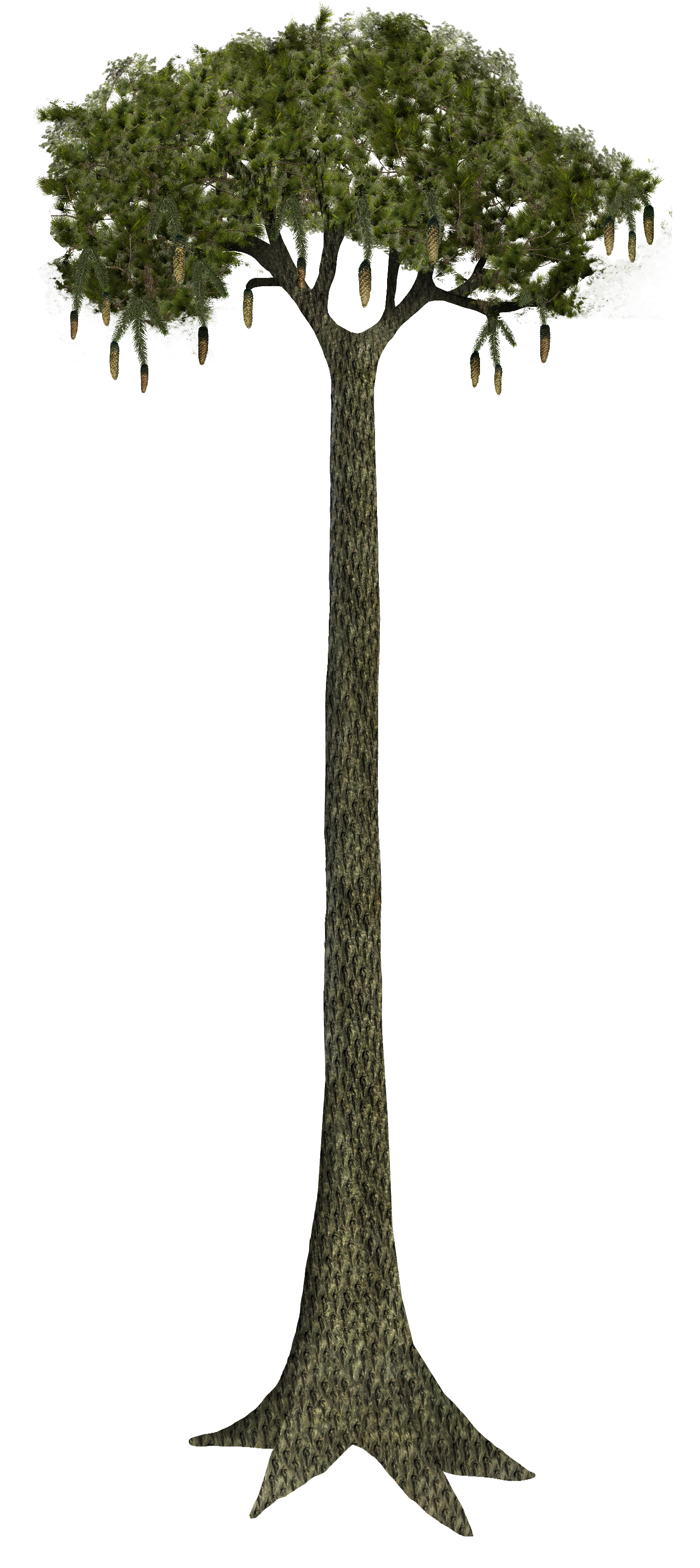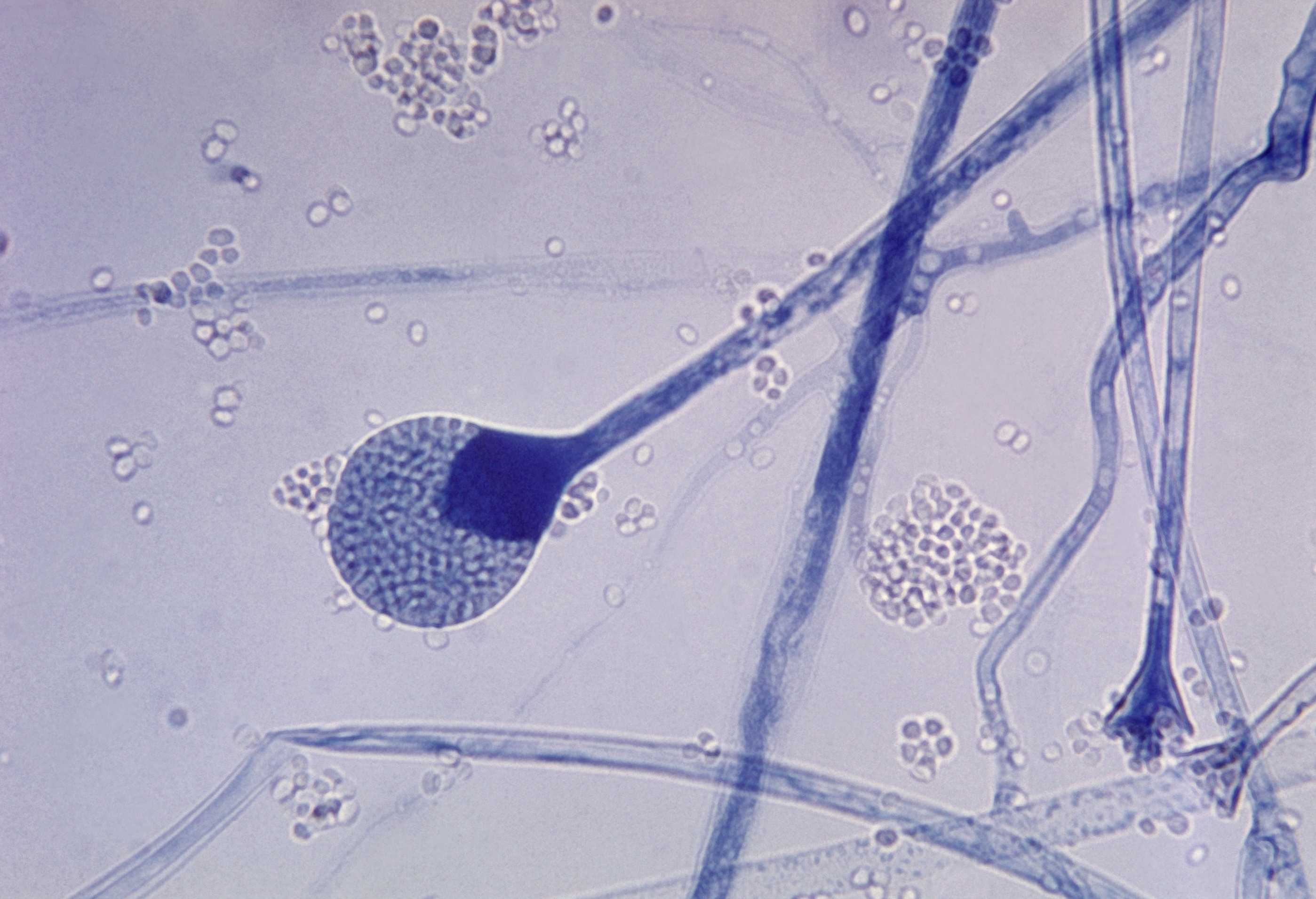|
Lycophyte
The lycophytes, when broadly circumscribed, are a group of vascular plants that include the clubmosses. They are sometimes placed in a division Lycopodiophyta or Lycophyta or in a subdivision Lycopodiophytina. They are one of the oldest lineages of extant (living) vascular plants; the group contains extinct plants that have been dated from the Silurian (ca. 425 million years ago). Lycophytes were some of the dominating plant species of the Carboniferous period, and included the tree-like Lepidodendrales, some of which grew over in height, although extant lycophytes are relatively small plants. The scientific names and the informal English names used for this group of plants are ambiguous. For example, "Lycopodiophyta" and the shorter "Lycophyta" as well as the informal "lycophyte" may be used to include the extinct zosterophylls or to exclude them. Description Lycophytes reproduce by spores and have alternation of generations in which (like other vascular plants) the sporop ... [...More Info...] [...Related Items...] OR: [Wikipedia] [Google] [Baidu] |
Clubmoss
Lycopodiopsida is a class of vascular plants also known as lycopsids, lycopods, or lycophytes. Members of the class are also called clubmosses, firmosses, spikemosses and quillworts. They have dichotomously branching stems bearing simple leaves called microphylls and reproduce by means of spores borne in sporangia on the sides of the stems at the bases of the leaves. Although living species are small, during the Carboniferous, extinct tree-like forms ( Lepidodendrales) formed huge forests that dominated the landscape and contributed to coal deposits. The nomenclature and classification of plants with microphylls varies substantially among authors. A consensus classification for extant (living) species was produced in 2016 by the Pteridophyte Phylogeny Group (PPG I), which places them all in the class Lycopodiopsida, which includes the classes Isoetopsida and Selaginellopsida used in other systems. (See Table 2.) Alternative classification systems have used ranks from div ... [...More Info...] [...Related Items...] OR: [Wikipedia] [Google] [Baidu] |
Lepidodendrales
Lepidodendrales (from the Greek for "scale tree") or arborescent lycophytes are an extinct order of primitive, vascular, Heterospory, heterosporous, arborescent (tree-like) plants belonging to Lycopodiopsida. Members of Lepidodendrales are the best understood of the fossil lycopsids due to the vast diversity of Lepidodendrales specimens and the diversity in which they were preserved; the extensive distribution of Lepidodendrales specimens as well as their well-preservedness lends paleobotanists exceptionally detailed knowledge of the coal-swamp giants’ reproductive biology, vegetative development, and role in their paleoecosystem. The defining characteristics of the Lepidodendrales are their secondary xylem, extensive periderm development, three-zoned Cortex (botany), cortex, rootlike appendages known as stigmarian rootlets arranged in a spiralling pattern, and megasporangium each containing a single functional megaspore that germinates inside the sporangium. Many of these differe ... [...More Info...] [...Related Items...] OR: [Wikipedia] [Google] [Baidu] |
Lycopodiales
The Lycopodiaceae (class Lycopodiopsida, order Lycopodiales) are an old family of vascular plants, including all of the core clubmosses and firmosses, comprising 17 accepted genera and about 500 known species. This family originated about 380 million years ago in the early Devonian, though the diversity within the family has been much more recent. "Wolf foot" is another common name for this family due to the resemblance of either the roots or branch tips to a wolf's paw. Description Members of Lycopodiaceae are not spermatophytes and so do not produce seeds. Instead they produce spores, which are oily and flammable, and are the most economically important aspects of these plants. The spores are of one size (i.e. the plants are isosporous) and are borne on a specialized structure at the apex of a shoot called a strobilus (plural: strobili), which resembles a tiny battle club, from which the common name derives. Members of the family share the common feature of having a microphy ... [...More Info...] [...Related Items...] OR: [Wikipedia] [Google] [Baidu] |
Zosterophyll
The zosterophylls are a group of extinct land plants that first appeared in the Silurian period. The taxon was first established by Banks in 1968 as the subdivision Zosterophyllophytina; they have since also been treated as the division Zosterophyllophyta or Zosterophyta and the class or plesion Zosterophyllopsida or Zosteropsida. They were among the first vascular plants in the fossil record, and had a world-wide distribution. They were probably stem-group lycophytes, forming a sister group to the ancestors of the living lycophytes. By the late Silurian (late Ludlovian, about ) a diverse assemblage of species existed, examples of which have been found fossilised in what is now Bathurst Island in Arctic Canada. Morphology The stems of zosterophylls were either smooth or covered with small spines known as enations, branched dichotomously, and grew at the ends by unrolling, a process known as circinate vernation. The stems had a central vascular column in which the protox ... [...More Info...] [...Related Items...] OR: [Wikipedia] [Google] [Baidu] |
Fern
The ferns (Polypodiopsida or Polypodiophyta) are a group of vascular plants (plants with xylem and phloem) that reproduce via spores and have neither seeds nor flowers. They differ from mosses by being vascular, i.e., having specialized tissues that conduct water and nutrients, and in having life cycles in which the branched sporophyte is the dominant phase. Ferns have complex leaf, leaves called megaphylls that are more complex than the microphylls of clubmosses. Most ferns are leptosporangiate ferns. They produce coiled Fiddlehead fern, fiddleheads that uncoil and expand into fronds. The group includes about 10,560 known extant species. Ferns are defined here in the broad sense, being all of the Polypodiopsida, comprising both the leptosporangiate (Polypodiidae (plant), Polypodiidae) and eusporangiate ferns, the latter group including horsetails, Psilotaceae, whisk ferns, marattioid ferns, and ophioglossoid ferns. The fern crown group, consisting of the leptosporangiates and ... [...More Info...] [...Related Items...] OR: [Wikipedia] [Google] [Baidu] |
Isoetes
''Isoetes'', commonly known as the quillworts, is a genus of lycopod. It is the only living genus in the family Isoetaceae and order Isoetales. , there were about 200 recognized species, with a cosmopolitan distribution mostly in aquatic habitats but with the individual species often scarce to rare. Species virtually identical to modern quillworts have existed since the Jurassic epoch, though the timing of the origin of modern ''Isoetes'' is subject to considerable uncertainty. The name of the genus may also be spelled ''Isoëtes''. The diaeresis (two dots over the e) indicates that the o and the e are to be pronounced in two distinct syllables. Including this in print is optional; either spelling (''Isoetes'' or ''Isoëtes'') is correct. Description Quillworts are mostly aquatic or semi-aquatic in clear ponds and slow-moving streams, though several (e.g. '' I. butleri'', '' I. histrix'' and '' I. nuttallii'') grow on wet ground that dries out in the summer. The ... [...More Info...] [...Related Items...] OR: [Wikipedia] [Google] [Baidu] |
Drepanophycales
Drepanophycales is an order of extinct lycophyte plants of Late Silurian to Late Devonian age (around ), found in North America, China, Russia, Europe, and Australia. Sometimes known as the Asteroxylales or Baragwanathiales. Description Extinct terrestrial vascular plants of the Silurian to Devonian periods. Stem of the order of several mm to several cm in diameter and several cm to several metres long, erect or arched, dichotomizing occasionally, furnished with true roots at the base. Vascular bundle an exarch actinostele, tracheids of primitive annular or helical type (so-called G-type). Stem clothed in either microphylls (leaves with a single vascular thread or 'vein'), or with leaf-like enations (unvascularized projections) with a vascular trace into the base of each enation. Homosporous, with sporangia borne singly and dehiscing by a single slit. List of families The following families have, at various times, been segregated within the Drepanophycales. However, Kenrick and ... [...More Info...] [...Related Items...] OR: [Wikipedia] [Google] [Baidu] |
Sporangium
A sporangium (from Late Latin, ; : sporangia) is an enclosure in which spores are formed. It can be composed of a unicellular organism, single cell or can be multicellular organism, multicellular. Virtually all plants, fungus, fungi, and many other groups form sporangia at some point in their biological life cycle, life cycle. Sporangia can produce spores by mitosis, but in land plants and many fungi, sporangia produce genetically distinct haploid spores by meiosis. It's outdated name, sporange, is one of the few perfect rhymes for Orange (colour), orange. Fungi In some phyla of fungi, the sporangium plays a role in asexual reproduction, and may play an indirect role in sexual reproduction. The sporangium forms on the sporangiophore and contains Ploidy, haploid Cell nucleus, nuclei and cytoplasm. Spores are formed in the sporangiophore by encasing each haploid nucleus and cytoplasm in a tough outer membrane. During asexual reproduction, these spores are dispersed via wind and g ... [...More Info...] [...Related Items...] OR: [Wikipedia] [Google] [Baidu] |
Selaginellales
''Selaginella'', also known as spikemosses or lesser clubmosses, is a genus of lycophyte. It is usually treated as the only genus in the family Selaginellaceae, with over 750 known species. This family is distinguished from Lycopodiaceae (the clubmosses) by having scale-leaves bearing a ligule and by having spores of two types. They are sometimes included in an informal paraphyletic group called the "fern allies". The species '' S. moellendorffii'' is an important model organism. Its genome has been sequenced by the United States Department of Energy's Joint Genome Institute. The name ''Selaginella'' was erected by Palisot de Beauvois solely for the species '' Selaginella selaginoides'', which turns out (with the closely related '' Selaginella deflexa'') to be a clade that is sister to all other ''Selaginellas'', so any definitive subdivision of the species into separate genera leaves two taxa in ''Selaginella'', with the hundreds of other species in new or resurrected genera ... [...More Info...] [...Related Items...] OR: [Wikipedia] [Google] [Baidu] |
Selaginella
''Selaginella'', also known as spikemosses or lesser clubmosses, is a genus of lycophyte. It is usually treated as the only genus in the family Selaginellaceae, with over 750 known species. This family is distinguished from Lycopodiaceae (the clubmosses) by having scale-leaves bearing a ligule and by having spores of two types. They are sometimes included in an informal paraphyletic group called the " fern allies". The species '' S. moellendorffii'' is an important model organism. Its genome has been sequenced by the United States Department of Energy's Joint Genome Institute. The name ''Selaginella'' was erected by Palisot de Beauvois solely for the species '' Selaginella selaginoides'', which turns out (with the closely related '' Selaginella deflexa'') to be a clade that is sister to all other ''Selaginellas'', so any definitive subdivision of the species into separate genera leaves two taxa in ''Selaginella'', with the hundreds of other species in new or resurrected gen ... [...More Info...] [...Related Items...] OR: [Wikipedia] [Google] [Baidu] |





